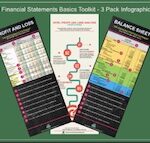Ever thought of Hotel KPIs as an instrument cluster dashboard?
The kind you glance at regularly when you drive your automobile.
Why do you keep looking at your car’s instrument panel?
So that you can check on some key readings on the panel.
For example
- what is the position of your fuel?
- What speed are you driving at?
- On your GPS, how much more distance and time to your destination and so on.
The idea is to measure progress along with some important indicators.
Well, your hotel operation also has its own set of metrics to watch out for.
Grab this EXCEL Spreadsheet
Don’t miss our 5 Killer Hotel KPIs Dashboard
Get this exclusive Excel Template that you can customize to create your own 5 Killer Hotel KPIs Dashboard
You may not be glancing all the time at the metrics.
But measuring progress is something you have to do at regular intervals.
I will lay out a case for hotel KPIs which will tell you how you are faring.
In particular, I will tell you the metrics you cannot take your eyes off!
Don't miss the 10 Step Drill Down Technique at the end of this post.
Let’s do this.
This Blog Post will cover
Hotel KPIs - Not all Made the Same
Just like glancing at your car’s instrument panel, you need to monitor hotel performance regularly.
And that is where Hotel KPIs come in.
KPIs are an acronym for Key Performance Indicators.
It is important to realize that there could be hundreds of different performance indicators.
But you cannot be looking at all of them.
So, you choose some key ones.
In other words you choose Key Performance Indicators.
Note the word “key.”
Key means important.
However, it is critical to realize that hotel KPIs are not all made the same.
Meaning, hotel KPIs address different facets of hotel operation performance.
Let us see which performance indicators are considered key and why.
Post Pandemic Era Shifts
Covid-19 has turned business models upside down globally.
Customer preferences have changed dramatically.
This has meant that hotel KPIs have also undergone changes.
Basic Hotel KPIs have not changed.
But in many cases, how they are measured has changed.
Hotel KPIs - Performance Areas
Broadly, hotel KPIs can be categorized as addressing following performance areas:
- Capacity KPIs
- Business Volume KPIs
- Price KPIs
- Revenue KPIs
- Expenses KPIs
- Profitability KPIs
- Guest Loyalty KPIs
This is certainly not an exhaustive list.
However, these are the most commonly measured hotel KPIs.
Then you could also categorize based on:
- Big Picture Overview
- Individual Focus
Big Picture Overview Hotel KPIs are those that cover the entire hotel operation.
For example, Market Share is a hotel KPI that measures a hotel’s standing in the market it operates.
While there are different ways to calculate what market share is, the concept is about the big picture.
Moreover, Market Share includes some hotel KPI categories which we saw earlier like business volume, price etc.
Similarly, Profitability Hotel KPIs measure almost the end business result of a hotel operation - the bottom line.
Profitability KPIs include many individual area hotel KPI categories like
- revenue,
- expenses,
- capacity and so on
which we listed earlier.
So, that is the reason we said hotel KPIs are not all made the same.
It will depend on what your goal is in measuring hotel KPIs.
Let us now visit some hotel KPIs which could give you an overall picture of the hotel operation.
This is considering that all hotel KPIs will ultimately relate to one another.
We will be using a technique called Drill Down.
This will allow us to have the best performance management process for improvement.
Hotel Revenue KPIs
Let us look at one of the most important hotel metrics in a dashboard.
A hotel manager cannot remove their attention from these.
And these are revenue based hotel KPIs.
Revenue literally drives almost every kind of performance KPIs.
Not for nothing it is known as the Top Line.
During covid-19, no metric took a battering more than the hotel revenue KPI.
In the hotel industry there is a saying:
No Top Line, No Bottom Line.
Revenue is contributed by a few other hotel KPIs.
The first one is the Hotel Capacity KPI.
Hotel Capacity KPI
Revenue cannot be generated without a source.
The source is the hotel asset.
A hotel’s capacity is commonly used as the highest salable units of its asset.
And those highest salable units are known as Rooms Available.
The reference is to hotel guest rooms.
So, you could say Rooms Available is one critical hotel Capacity KPI.
Total Rooms Available in a hotel are further classified into different room types.
A typical classification is:
- Standard
- Superior
- Deluxe
- Suite
Hotels market their guest rooms in ways more than just the above classification.
For example:
- view is commonly used to add a supplement;
- say, in a resort, an ocean view commands higher rate than any other view.
It is important to realize that all these are still part of the hotel capacity KPI.
Business Volume & Price KPIs
If capacity is the asset that generates revenue, then business volume and price contribute to earning revenue.
These are represented by:
- Occupancy
- Average Daily Rate
When occupancy is multiplied by average daily rate you get room revenue.
Occupancy is one of the most critical hotel KPIs.
It literally gauges the volume of business represented by customers for the day.
Average Daily Rate (ADR) is simply the average of all room rates charged by the hotel for all room types sold in a day.
ADR also represents the level of prices that a hotel commands in its market.
Hotel RevPAR KPI
No hotel performance measurement can be complete without a RevPAR KPI.
RevPAR uses hotel capacity which we discussed earlier to measure revenue performance.
This is a powerful method of measurement.
Why so?
Because it allows you to gauge whether hotel capacity (rooms available) is being utilized efficiently.
A quick way to calculate RevPAR is:
Average Daily Rate x Occupancy %.
Now we get into revenue related hotel KPIs (note the word "related").
Hotel Expenses KPI
Revenue cannot be generated without incurring expenses.
And so, the hotel expenses KPI is a crucial metric.
Often, hotels do a good job of earning revenue.
However, they give it away with bad expenses management.
It affects the bottom line (see next hotel KPI).
Hotel expenses are typically tracked according to their behavior as below:
- Fixed Expenses
- Variable Expenses
Fixed expenses do not change according to business volume (occupancy is one example).
On the other hand, Variable Expenses change according to business volume.
Expenses are often known as the cost of doing business.
And now the hotel KPI which is one of the main goals of a business - Profitability KPI.
Hotel Profitability KPI
If revenue is considered the top line, profitability is the bottom line.
Profit is calculated by deducting total expenses from total revenue.
You can consider it the end business result.
As stated earlier, a hotel may have earned good revenue in a month.
However, the job is not complete until that revenue translates to good profit.
That is achieved by good revenue as well as expenses management.
Most Important Profitability KPI - Gross Operating Profit
Depending on what is included in the calculation, profit may have different flavors or definitions.
The most common and important profitability KPI is the Gross Operating Profit.
It is popularly known as GOP.
Gross Operating Profit is calculated as below:
Total Operated Department Revenue
LESS
Undistributed Operating Expenses
The Gross Operating Profit is often known as Index of efficiency of the hotel operation.
A higher GOP is indicative of good revenue and expense management.
Hotel KPIs - Drill Down Technique
So, as we can see, there are a whole host of metrics that we can consider for hotel KPIs.
However, critical is to follow a process which we talked about briefly earlier.
Remember Drill Down we mentioned earlier?
What is the drill down technique?
Many hotel middle managers (and some senior ones too, unfortunately) take a hit or miss approach to analysis.
The Drill Down Technique focuses on the Cause Effect principle.
Let me explain briefly.
The best approach to analysis is as follows:
- Use Big Picture KPIs
- Drill Down to KPIs causing Changes
- Drill further down to ancillary KPIs
10 Step Drill Down Technique
Let me illustrate using a 10 Step drill down technique on one part of the analysis.
Take a month’s P&L
- First, look at total hotel GOP for month.
- Second, Compare to Last Year Same Month hotel GOP.
- Third, Is this year GOP higher or lower?
- Fourth, Drill Down to total hotel revenue.
- Fifth, is this year current month revenue higher or lower than last year same month?
- Sixth, Is Room Revenue this year current month higher or lower than last year?
- Seventh, is occupancy higher this year current month than last year?
- Eighth, is average daily rate higher this year current month than last year?
- Ninth, are expenses this year in current month higher or lower than last year?
- Tenth, are rooms expenses this year in current month higher or lower than last year.
Notice how with each succeeding step we are going to the cause of a result.
For example:
- Step 1 looks at GOP for the month.
- Step 2 & 3, compare and determine whether GOP is higher or lower than last year.
- Step 4 drills down to revenue from GOP.
- Since GOP is a profit measure, one of its first causes is revenue.
- That is what Step 4 does.
- Step 5 & 6 drill down from revenue to room revenue
- Steps 7 & 8 drill down from room revenue to occupancy and average daily rate.
What is the moral of the story?
The moral is that:
- in a drill down technique,
- you dig deeper into the cause
- of a particular hotel KPI.
Try it with your hotel P&L.
You will be amazed at what your analysis will yield!
This article was first published by the author for www.4Hoteliers.com and is reproduced here with their permission.
Sign up to Hotel Finance Trainer Newsletter for tips, strategies and secrets straight to your inbox.
7




